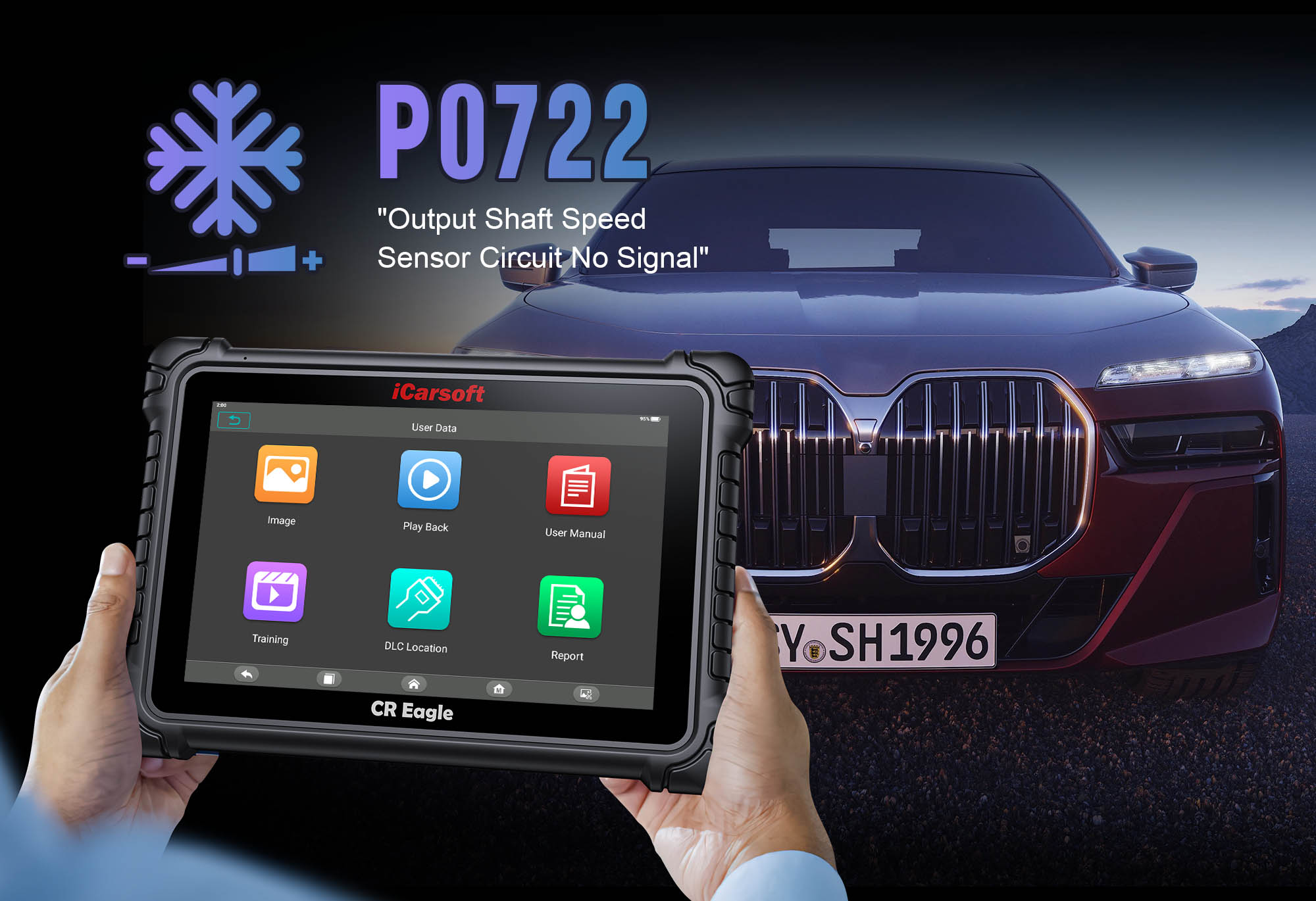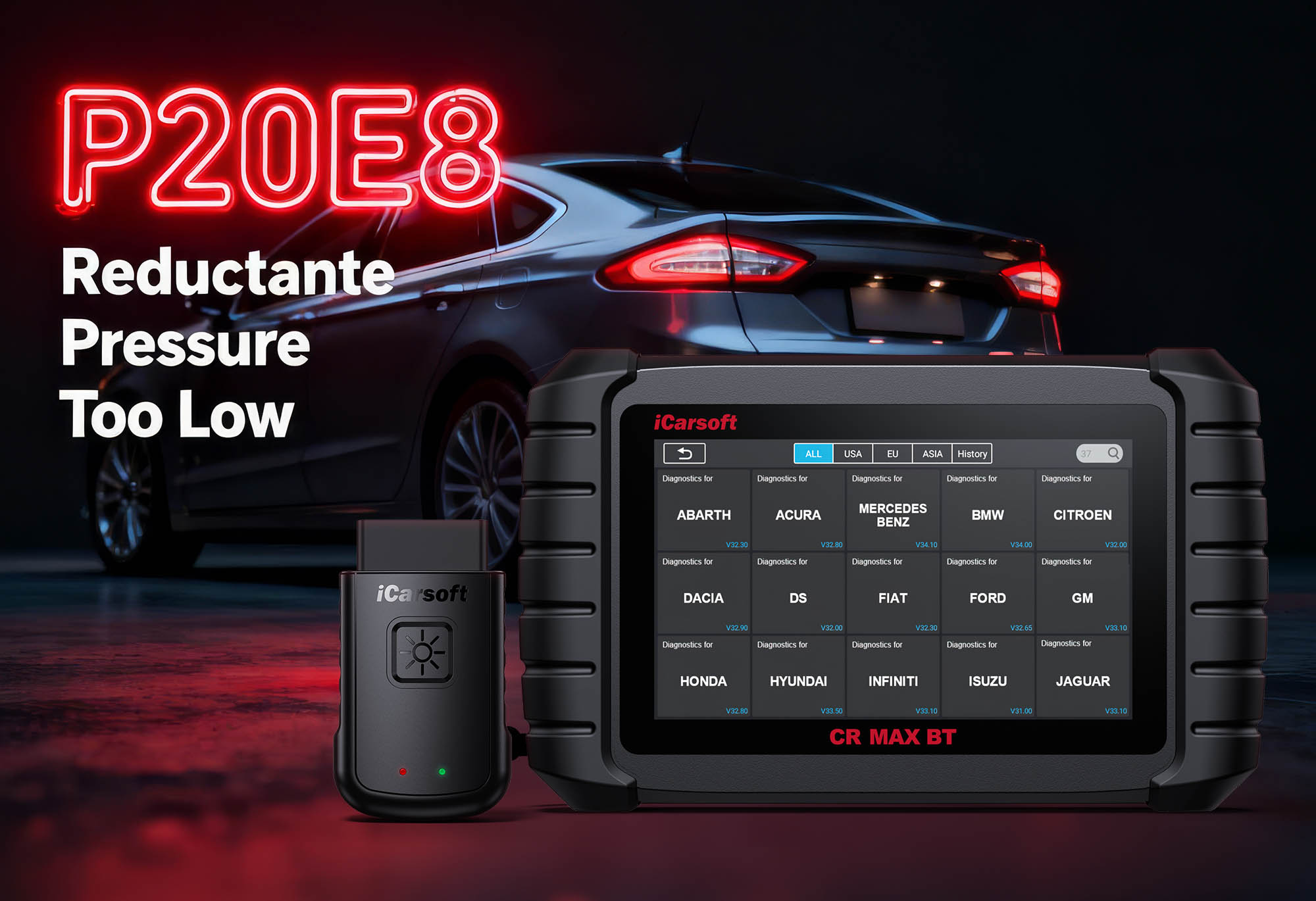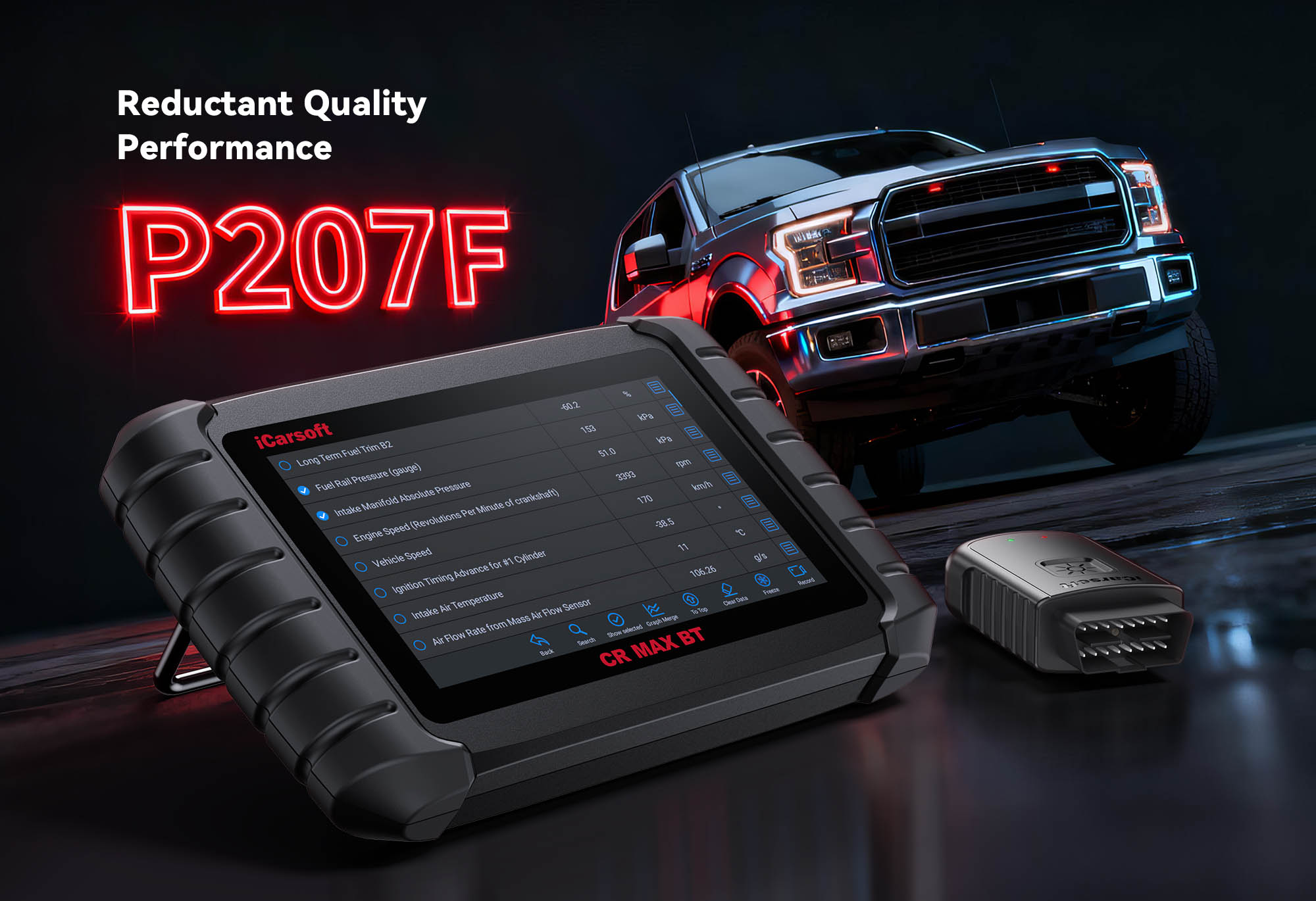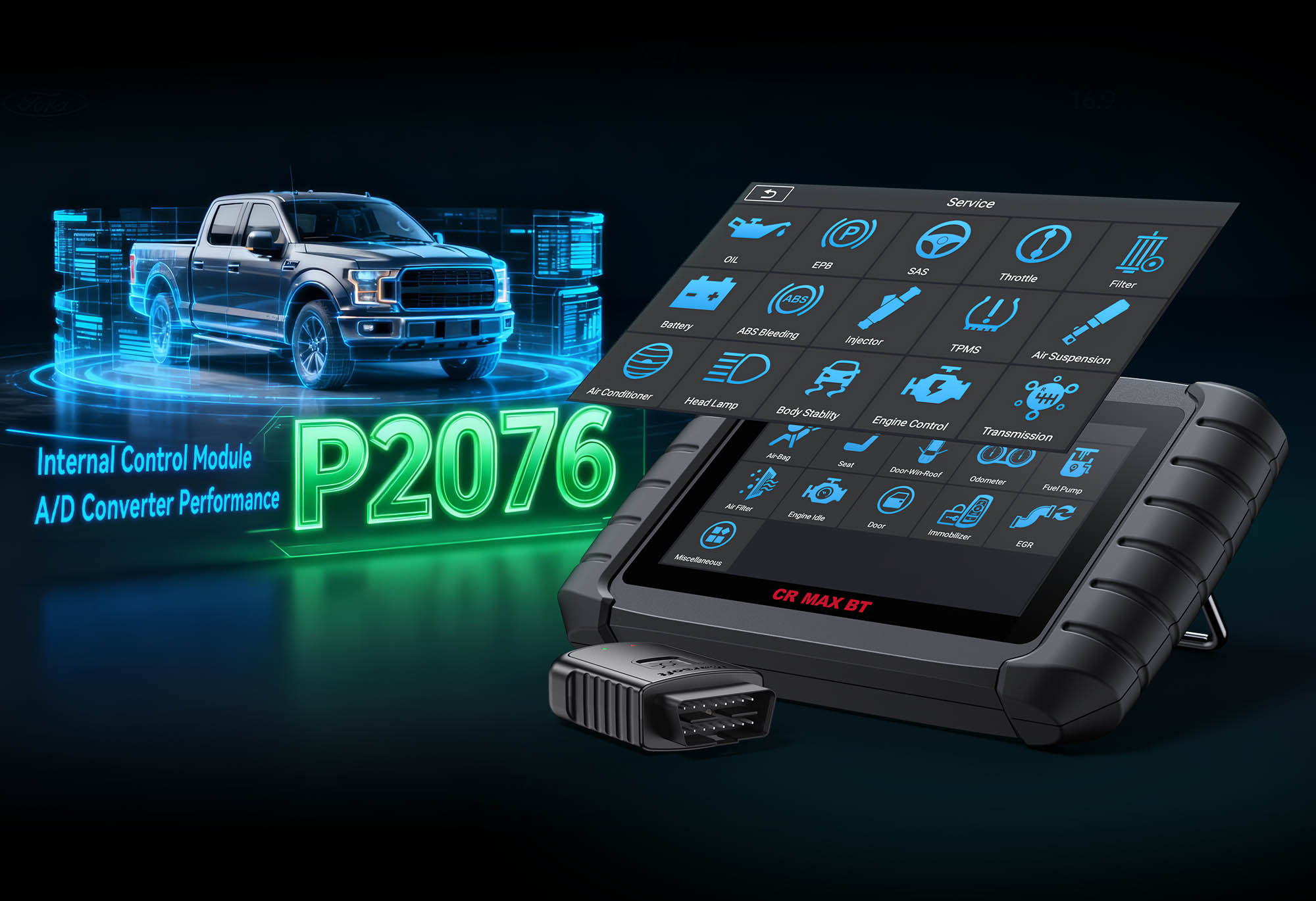Understand, Diagnose & Clear P0722: Fix Output Shaft Speed Sensor Malfunction with iCarsoft CR Eagle
If your vehicle’s check engine light turns on and a diagnostic scan returns the P0722 code, it’s signaling an "Output Shaft Speed (OSS) Sensor No Signal" issue. The output shaft speed sensor is a critical component in automatic transmissions: it monitors the rotational speed of the transmission’s output shaft (which connects to the drive wheels) and sends real-time data to the Transmission Control Module (TCM) or Engine Control Module (ECM). This data helps the TCM/ECM adjust shift timing, torque converter lockup, and transmission pressure—ensuring smooth, efficient gear changes. When the sensor fails to send a signal (triggering P0722), the transmission may enter "limp mode" (stuck in a single gear), shift erratically, or even refuse to shift at all.
With the iCarsoft CR Eagle—a diagnostic tool optimized for transmission systems—you can accurately identify whether the problem lies in a faulty sensor, damaged wiring, or a TCM glitch, then clear the code once repairs are complete. Let’s break down everything you need to know to resolve P0722.
Understanding P0722: The Role of the Output Shaft Speed (OSS) Sensor
To grasp why P0722 matters, first understand the OSS sensor’s function:
-
Location: Typically mounted on the transmission case, near the output shaft (varies by vehicle—e.g., front-wheel-drive models may have it on the side of the transaxle).
-
Function: Uses a magnetic or hall-effect sensor to detect the speed of the output shaft (measured in RPM). This tells the TCM/ECM how fast the drive wheels are spinning relative to engine speed.
-
Why It’s Critical: Without an OSS signal, the TCM can’t calculate the correct time to shift gears. It may default to a safe "limp mode" to prevent transmission damage, limiting your vehicle to 2nd or 3rd gear.
P0722 specifically means the TCM/ECM isn’t receiving any signal from the OSS sensor—unlike related codes (e.g., P0720 for "OSS Sensor Circuit Malfunction," which may indicate intermittent signals).
Symptoms of P0722
-
Illuminated Check Engine Light: The primary indicator of an OSS sensor issue.
-
Transmission Limp Mode: The transmission gets stuck in one gear (usually 2nd or 3rd) to protect internal components.
-
Erratic or No Shifting: Gears may shift too late/early, or the transmission may refuse to shift beyond a certain gear.
-
Torque Converter Issues: The torque converter may not lock up properly, causing increased fuel consumption or a "slipping" feeling when accelerating.
-
No-Start (Rare): In some vehicles, a failed OSS sensor disrupts the TCM-ECM communication, preventing the engine from starting.
Common Causes of P0722
|
Cause
|
Description
|
|
Faulty OSS Sensor
|
The sensor’s internal wiring or magnetic element wears out (the most common cause—sensors typically last 80,000–120,000 miles).
|
|
Damaged Sensor Wiring/Harness
|
Wires connecting the OSS sensor to the TCM/ECM can fray, cut, or corrode (often due to heat from the transmission or road debris).
|
|
Loose or Corroded Connector
|
The OSS sensor’s electrical connector may have loose terminals or corrosion (moisture intrusion is a common culprit).
|
|
Dirty or Contaminated Sensor
|
Transmission fluid leaks or debris can coat the sensor’s tip, blocking its ability to detect the output shaft’s speed.
|
|
TCM Malfunction
|
Rarely, the TCM itself fails to receive or process the OSS signal—though this is far less common than sensor or wiring issues.
|
|
Low Transmission Fluid
|
Insufficient fluid can cause the output shaft to operate erratically, or even damage the sensor (if the fluid level is extremely low).
|
Why iCarsoft CR Eagle Excels at Diagnosing P0722
The iCarsoft CR Eagle stands out for transmission-related diagnostics like P0722, as it goes beyond basic code reading to provide transmission-specific insights. Here’s its key value:
OSS Sensor Signal Testing
Streams live data showing OSS sensor RPM. A "0 RPM" or "No Signal" reading confirms P0722, distinguishing it from intermittent issues (e.g., P0720).
Voltage & Circuit Checks
Measures voltage at the OSS sensor connector (5V for hall-effect, 12V for magnetic sensors) to identify power issues vs. faulty sensors.
TCM Communication Scans
Scans the TCM separately to verify if it’s receiving the OSS signal, ruling out module malfunctions as the root cause.
Vehicle-Specific Diagrams
Provides OSS sensor location maps and wiring diagrams (e.g., rear of 6-speed auto in Toyota Camry) to simplify physical inspection.
Shift Pattern Analysis
Records and compares transmission shift points to factory specs, confirming if shifts are disrupted due to missing OSS data.
Bi-Directional Control
For compatible systems, sends test signals to the OSS sensor to verify responsiveness, quickly isolating sensor vs. wiring issues.
Step-by-Step: Diagnosing and Clearing P0722 with iCarsoft CR Eagle
-
Confirm the Code and Check Transmission Fluid
Connect the iCarsoft CR Eagle to your vehicle’s OBD-II port (under the dashboard) and power it on. Select your vehicle’s make, model, and year (use AutoVIN for accuracy). Navigate to "OBD-II" > "Read Codes" to confirm P0722. Note related codes (e.g., P0720, P0730). Check fluid level/condition using the CR Eagle’s "Transmission Fluid Guide"—top up or replace if low/dirty.
-
Test the OSS Sensor Signal
Go to "Transmission" > "Live Data" > "Output Shaft Speed." Start the engine, shift to "Drive," and accelerate gently. OSS RPM should increase with vehicle speed (e.g., 1,000 RPM at 30 mph). A constant "0" or "No Signal" indicates a sensor or wiring issue.
-
Check OSS Sensor Voltage
Turn off the engine, locate the OSS sensor (use CR Eagle’s "Component Location"), and disconnect its connector. Set the tool to "Voltage Test" and probe power/ground pins (refer to wiring diagram). Turn ignition to "On": 4.5–5.5V (hall-effect) or 10–12V (magnetic) is normal. No voltage = wiring/TCM issue; normal voltage = faulty sensor.
-
Inspect Wiring and Connectors
Use the CR Eagle’s "Continuity Test" to check wiring between the OSS sensor and TCM (disconnect TCM connector first). No continuity = broken wire (repair with heat-shrink). Inspect connectors for corrosion/bent pins—clean with contact cleaner or replace.
-
Clean or Replace the OSS Sensor
If voltage/wiring are normal: Remove the OSS sensor (use CR Eagle’s "Service Tips" for torque specs). Clean debris from the tip; reinstall and retest. If signal still fails, replace with an OEM-compatible sensor (CR Eagle displays correct part numbers).
-
Reset the TCM and Clear the Code
After repairs, go to "Special Functions" > "Transmission Reset" to clear TCM memory. Select "Clear Codes" to erase P0722.
-
Verify Repairs
Idle for 5 minutes to warm the transmission. Test drive, accelerating through all gears—monitor OSS RPM via live data. Re-scan after 50–100 miles; no P0722 means success.
Tips to Prevent P0722 from Recurring
-
Check Transmission Fluid Regularly: Follow maintenance schedules (30,000–60,000 miles) to top up or replace fluid—dirty fluid damages sensors and components.
-
Inspect the OSS Sensor During Service: When changing fluid, check for leaks or debris on the sensor; clean gently with a lint-free cloth.
-
Protect Wiring Harnesses: Secure transmission-area wiring away from hot/exhaust components and moving parts to prevent fraying.
-
Use the CR Eagle for Monthly Scans: Run "Transmission Health Checks" to monitor OSS signal and TCM performance—catch issues early.
Final Thoughts
With the iCarsoft CR Eagle, diagnosing P0722 becomes a straightforward process—no more guessing if the problem is a sensor, wire, or TCM. Its ability to test signals, monitor live transmission data, and reset the TCM ensures you fix the root cause, not just the code. For DIYers and technicians alike, this tool restores smooth shifting, prevents transmission damage, and keeps your vehicle running reliably.
Don’t let a faulty OSS sensor leave you stuck in limp mode—grab your iCarsoft CR Eagle and get your transmission back on track.





